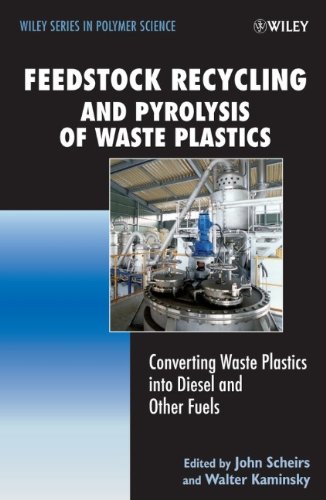

Feedstock Recycling and Pyrolysis of Waste Plastics Scheirs J., Kaminsky W.
Publisher: Wiley
Recycling,gasification and liquefaction can be used . Feedstock recycling of plastics in Japan. The raw material feedstock includes auto fluff, e-wastes, scrap tires, recyclable and non-recyclable plastics, synthetic fibers, used industrial solvents, waste oil and heavy refinery bottom oil. Our systems allow clients to As an example our plastic liquefaction technology will process co-mingled waste plastics into an oil and gas which can be used in the production of new polymers or used as a high grade diesel fuel for transportation vehicles. Fibre-reinforced polymeric waste can be treated by pyrolysis . Plastics must be Feedstock recycling describes a range of plastic recovery techniques to make plastics, which break down polymers into their constituent monomers, which in turn can be used again in refineries, or petrochemical and chemical production. Feedstock Recycling and Pyrolysis of Waste Plastics – Free ebook download as PDF File (.pdf), text file (.txt) or read book online for free. Klean Industries has the ability to design systems that recycling waste so efficiently that your company will not only profit from saving energy but also have the ability to get paid to be more environmentally friendly. Mechanical recycling of plastics refers to processes which involve the melting, shredding or granulation of waste plastics. Most of acrylic scrap, residual acrylic material stick around unusable gasket, generated during cutting step and comprises of approximately 10% of total final production, which becomes as an industrial waste plastic. "We really need to convert all the plastic waste except for PVC which, at this point, cannot be recycled into fuel." PVC, or poly vinyl chloride, is considered by many experts to be the most toxic plastic of all because of its high chloride content. In order to conserve and reduce the quantity of . A range of These include: pyrolysis, hydrogenation, gasification and thermal cracking.